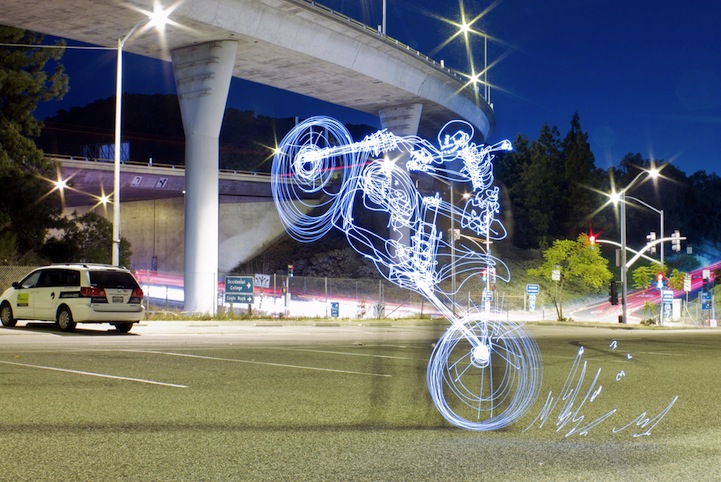06\02\2015
Written by Daan Rombaut

Darius Twin light paints a skateboarding skeleton
Light Goes On from Darren Pearson on Vimeo.
Los Angeles based photographer and graphic designer Darius Twin, aka Darren Pearson, started light painting in 2008 after seeing an image from photographer Gjon Mili that shows Pablo Picasso creating a light drawing called ‘Picasso Draws a Centaur’ which was published in Life Magazine in 1949. The first documented light painting dates back to 1889 and was made by Étienne-Jules Marey and Georges Demeny who called it ‘Pathological Walk From in Front’. In 1914 Frank Gilbreth and his wife Lilian Moller Gilbreth made a light painting by fixing lights to manufacturing and clerical workers to monitor their moves. The first famous art photographer who used the technique was Man Ray who in 1935 made the series ‘Space Writing’. Dean Chamberlain gave birth to the term light painting (using handheld lights to selectively illuminate and/or color parts of the subject or scene) with his photo ‘Polyethylene Bags On Chaise Longue’, taken at The Rochester Institute of Technology in 1977. Chamberlain was the first to dedicate his entire body of work to the art form.
Often people think Darius Twin’s images received a photoshop treatment, but they haven’t. Twin pioneered the light painting technique of spinning a prism made from glass in front of the camera while shining a light into to lens, resulting in a rainbow of prismatic circles. “Every movement is tracked precisely, and getting any recognizeable form is difficult,” explains Twin. “At the end of a blindly illustrated 5 – 7 minute exposure, you either have an image that works, or a luminous tangle with the disjointed parts of what you’ve intended.” Using a LED light, long exposure and a remote shutter release, he usually takes pictures in dramatic places away from the masses. Below you’ll find a film short about a skateboarding skeleton, titled ‘Light Goes On’. Follow him on Instagram for your daily dose of light paintings.
